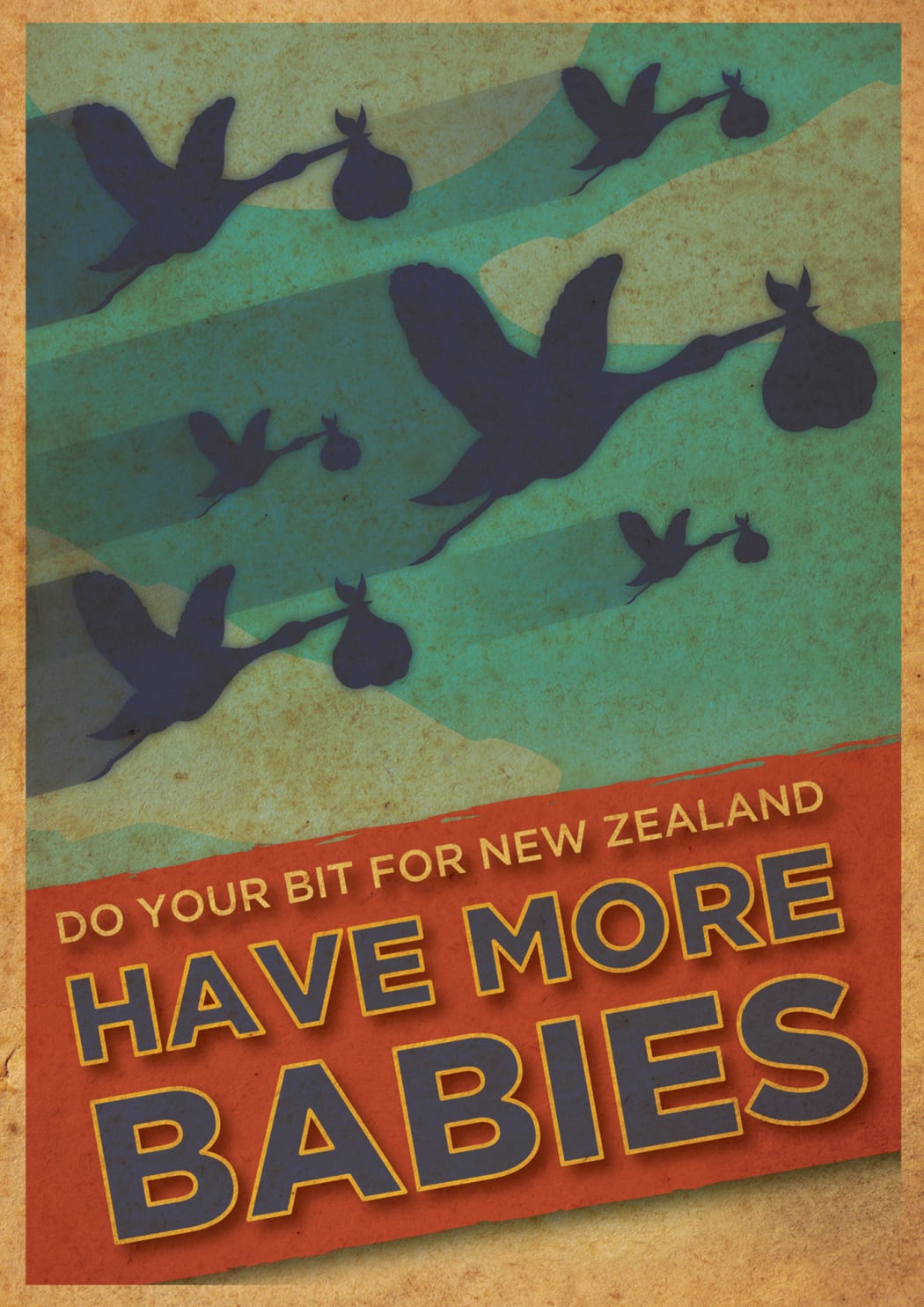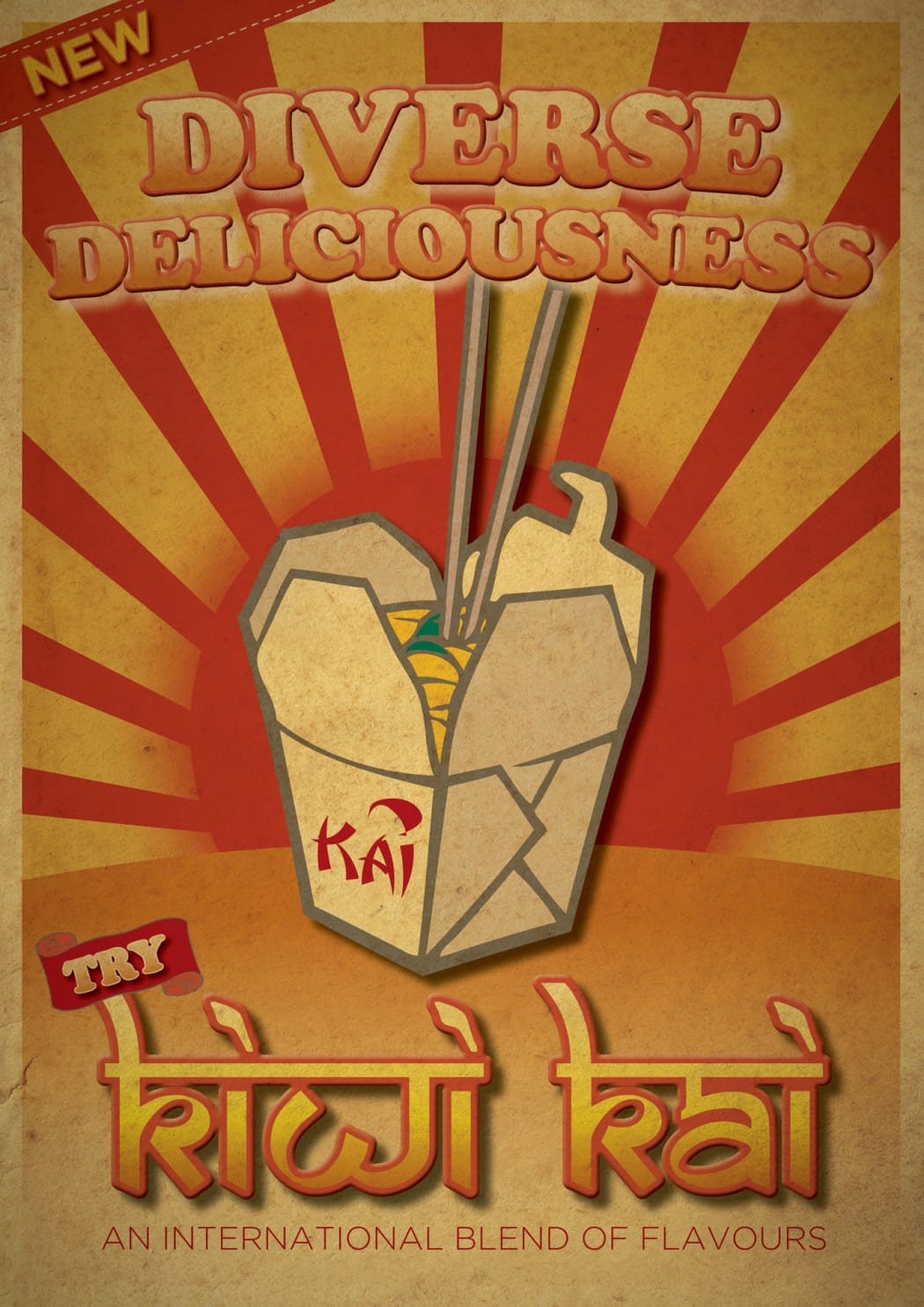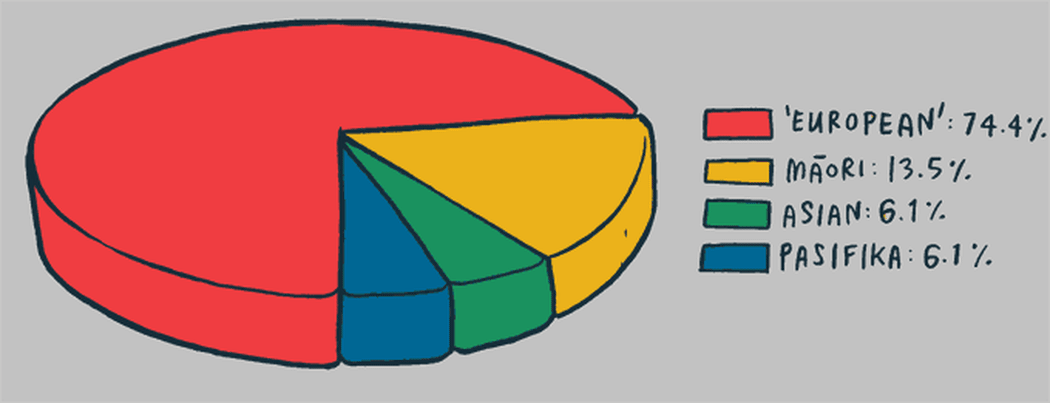It should go without saying (but often doesn’t): the fact that 2030 New Zealand will be much more ethnically diverse is by no means a bad thing. But it’s also necessary.
As the baby boomers age, our population will become disproportionately elderly, with a dependency ratio of about 2.6 people aged between 15 and 64 for every person aged 65 and over in 2036, and 2.31 in 2061. This “pig-in-the-python”, as it’s been evocatively described [pdf] by the Royal Society, will pass – but a productive workforce and more young people will certainly help it along.

Photo: Unknown
The generation gap is considerably less marked amongst the Pasifika and Maori populations (which also have higher fertility rates), which means it’s even more important to tackle issues like unemployment, poverty and obesity in which they’re over-represented.
But with fewer women having children, the fertility rate is currently 2.0, only just above the “replacement level” necessary for the population to replace itself in the long-term without migration. By 2030 it’s predicted to eclipse five million, and so much of that growth is dependent on migration from other countries.
That change is already visible in Auckland, where half a million people were born overseas, and is expected to continue as migration encourages migration: people are more likely to move to places where they know others and where their culture is established. The most rapid growth has been in the city’s Asian population, with one in four Aucklanders of Asian ethnicity. That’s predicted to be one in three by 2021.
WATCH: “The composition of our demography is changing, and it’s going to raise a series of questions about who we are.” Professor Paul Spoonley of Massey University discusses the implications of increasing migration from Asia.
Dr Andrew Butcher, director of research at the Asia New Zealand Foundation, points out that statistic encompasses “multiple languages, beliefs, cultures, cuisines and all the rest”. “This isn’t a homogenous group of people, and it’s not a discrete entity of people, either,” he says. “There are increasing numbers of Asians who are multi-ethnic … so there’s this great diversity.”
Penny Hulse, deputy mayor of Auckland, says that’s one of the city’s strengths. “We’ve got huge opportunities to do things with the rest of the world because we have this unbelievably diverse community. We kind of forget that it’s not like this everywhere else – it’s an extraordinary thing.”

Photo: Unknown
She says Aucklanders already embrace that diversity, pointing out that events like Diwali and the Lantern Festival are cause for a city-wide celebration, “not because we’re trying to appease a small community”. “It’s become part of the lovely fabric of our lives and I think for New Zealand, that peaceful diversity is going to be a remarkable selling point for us as a country.”
But Pakeha is still the dominant culture in Auckland, let alone the rest of the country; you wouldn’t be able to tell from local or central government, popular culture or media that the Asian population is currently 12 per cent of the national total, for example. “You don’t get a sense of the diversity of New Zealand,” says Dr Butcher.
READ: Sonia Sly on how racism exists in present-day New Zealand.
That’s starting to change in Auckland, where libraries, workplaces, aged care facilities and funeral homes are increasingly accommodating of the different needs of the population. Dr Butcher points out that some schools there have student bodies made up of more than 40 nationalities. “There’s some quite innovative thinking going by principals as to how they can cater to this new student body in the way that they deliver their teaching, and how they can offer those communities opportunities to represent their cultures to others in the classroom.”
But if that’s a challenge for Auckland, it will be a bigger one everywhere else. Dr Butcher says Christchurch – a city that has “a reputation as being very white” that’s not helped by its being home to a number of far right groups – will be a much more ethnically diverse city in the future as people relocate there to work on the rebuild, and some inevitably stay on once it’s done.
WATCH: Paul Spoonley of Massey University explains how migration is likely to impact New Zealand.
Similarly, it’s in the best interests of many small and provincial towns to encourage migrants to relocate there and contribute to their flat or declining populations and economies. Dr Butcher says that’s already happening in the King Country, Waikato and Carterton, where migrant workers are being actively recruited to work in the dairy industry. He says one town in the King Country is struggling to find people willing to join its local rugby team and volunteer fire brigade, simply because the Filipino migrants who have moved there don’t engage with their community that way. “You’ve got these very immediate consequences and I think that’s taking small town New Zealand by surprise.”

Photo: Unknown
Dr Butcher says more diversity will “bring a vibrancy and a multiculturalism to those rural areas” and Christchurch, but it does present challenges. “If you have 30 or 40 Asians going to Gore or parts of the King Country, that’s noticed straight away.” Already there’s evidence that migrants recruited to work in Southland’s dairy industry are being mistreated, and racist attitudes exist everywhere but are more overt in rural [pdf] and provincial places where there are small Asian communities.
With a hands-off approach taken by central and local government, social institutions like schools, religious and community groups, and charities tend to provide new migrants with welfare and support. Dr Butcher says the Catholic Church in Gore, population 9500, has “basically imported Filipino priests”. “That takes account of the needs of new populations down there, and you’ll see that in other respects elsewhere in the country.”
Cover image Doug Gaylard.

